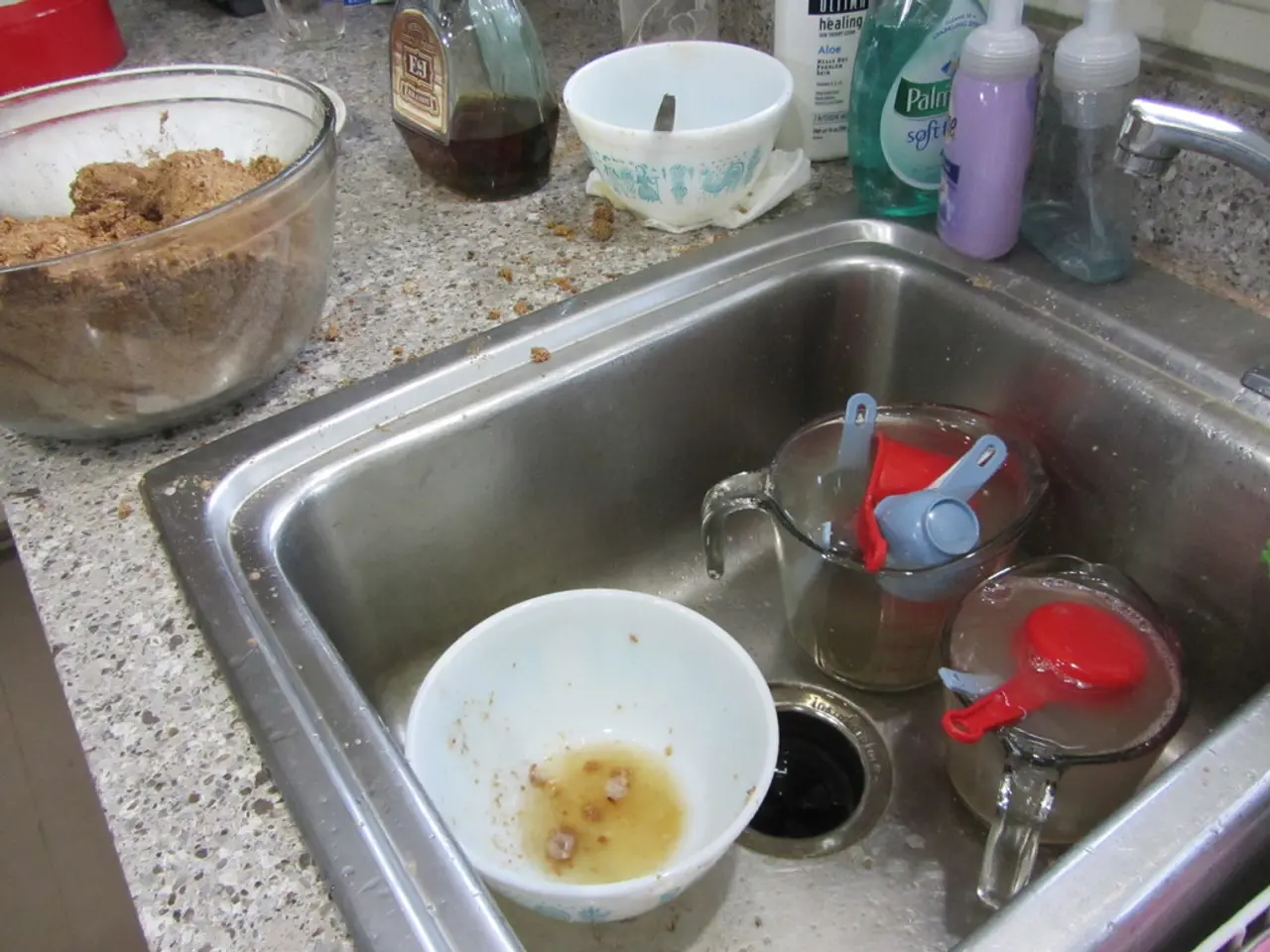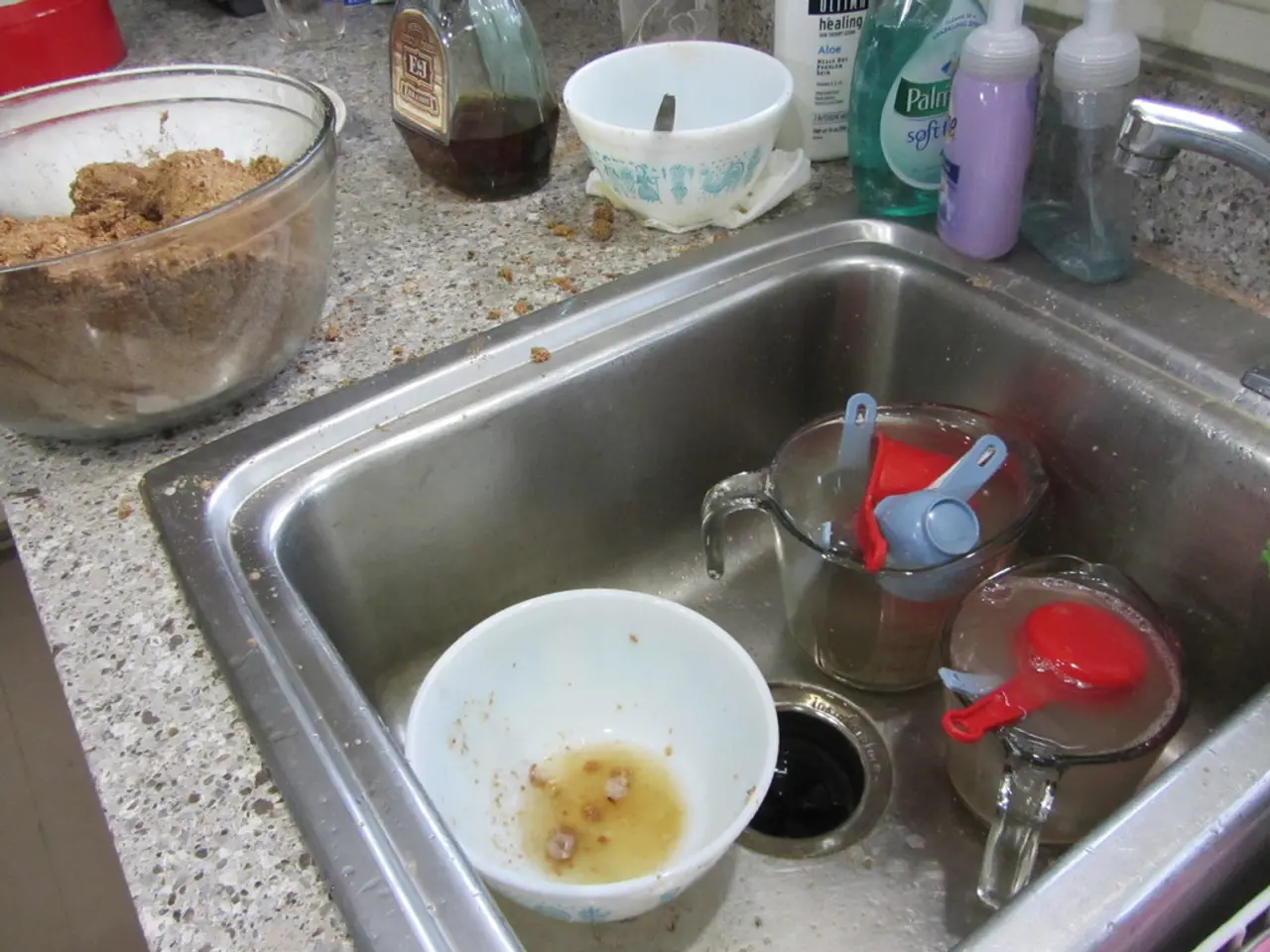Comprehensive Guide on the Human Microbiome: An In-depth Look at the 39 Trillion Microorganisms Residing Within Us
In the intricate web of life, the human body serves as a thriving ecosystem, teeming with billions of microorganisms collectively known as the human microbiome. This diverse community of bacteria, viruses, and fungi plays a crucial role in maintaining our health and well-being.
The vagina, for instance, is dominated by one species, Lactobacillus, which pumps out lactic acid to maintain a low, acidic pH that discourages other bacteria, yeast, and viruses from thriving.
The origins of our microbiome are deeply rooted in our early lives. Three-quarters of the human microbiome can be traced back to the mother, with babies born through caesarean section being more likely to develop allergies, asthma, coeliac disease, and obesity later in life.
Our feet, too, host a unique microbial community. With an average of 600 sweat glands per square centimeter, they provide a perfect diet for bacteria. Staphylococcus epidermidis on feet is often associated with the smell of isovaleric acid, similar to well-aged Stilton cheese.
The armpits, another microbial hotspot, are home to bacteria such as Staphylococcus hominis. These bacteria produce pungent compounds called thioalcohols when they encounter sweat.
The human microbiome is estimated to contain 39 trillion microbial cells, potentially holding 500 times more genes than the human genome. This vast, complex network of microorganisms plays vital roles in numerous aspects of health and behavior, including digestion, immune system modulation, metabolic balance, reproductive health, neurological function, and mood regulation.
The gut microbiome, in particular, aids in nutrient absorption and energy metabolism, influencing weight, insulin sensitivity, and overall metabolic homeostasis. It maintains intestinal barrier function and helps prevent infections by competing with pathogens.
The microbiome also trains and matures the immune system, promoting tolerance to harmless antigens while defending against pathogens. Dysbiosis (microbiome imbalance) can lead to immune dysfunction, chronic low-grade inflammation, and has been implicated in autoimmune diseases, allergies, and inflammatory bowel diseases.
The microbiome's influence extends to reproductive health, maintaining pH balance in the female urogenital tract and influencing outcomes such as preterm birth. It also impacts the nervous system via neuro-immuno-endocrine pathways, producing or modulating neurotransmitters such as serotonin, dopamine, and gamma-aminobutyric acid (GABA).
Beyond systemic effects, evidence suggests microbiome-driven neuromodulation might occur directly in the brain, potentially influencing neural systems even in healthy individuals. This is a developing field with emerging data from animal studies.
The delicate balance of two common scalp bacteria, Propionibacterium and Staphylococcus, is associated with dandruff. The majority of the human microbiome resides in the gut, with an estimated 400 trillion microbes.
The gut microbiome replenishes the linings of the gut and skin, replacing damaged and dying cells with new ones. It controls the storage of fat, assists in activating genes involved with absorbing nutrients, breaking down toxins, and creating blood vessels.
However, this symbiotic relationship can be disrupted, contributing to widespread health issues ranging from metabolic disorders to mental health conditions. Streptococcus mutans in the mouth turns sugars into acid that erodes tooth enamel, causing cavities. After we die, the immune system stops working, leaving our gut bacteria to start digesting the intestines, surrounding tissues, and eventually spreading to other organs.
Propionibacterium acnes lives deep within pores and hair follicles on skin and can cause spots. An estimated 30% of solid waste is dead bacteria in feces.
The human body provides a broad range of environments for microbes, each part being a different type of ecosystem. The human microbiome, with its vast array of roles and impacts, is indeed a key to maintaining physiological balance and mental well-being.
- Research in the field of health-and-wellness has revealed that the human microbiome, composed of trillions of microbial cells, is estimated to hold 500 times more genes than the human genome, highlighting its significance in various aspects of health and behavior.
- The climate and environment of our armpits, teeming with bacteria such as Staphylococcus hominis, contribute to the production of pungent compounds called thioalcohols when they encounter sweat.
- In the realm of medicine, studies have shown that the gut microbiome, which aids in nutrient absorption and energy metabolism, plays a pivotal role in maintaining metabolic homeostasis and influencing factors like weight and insulin sensitivity.
- The science of health and nature underscores the importance of maintaining a balanced microbiome, as imbalances (dysbiosis) can lead to a spectrum of health issues ranging from metabolic disorders to mental health conditions, as well as autoimmune diseases, allergies, and inflammatory bowel diseases.




